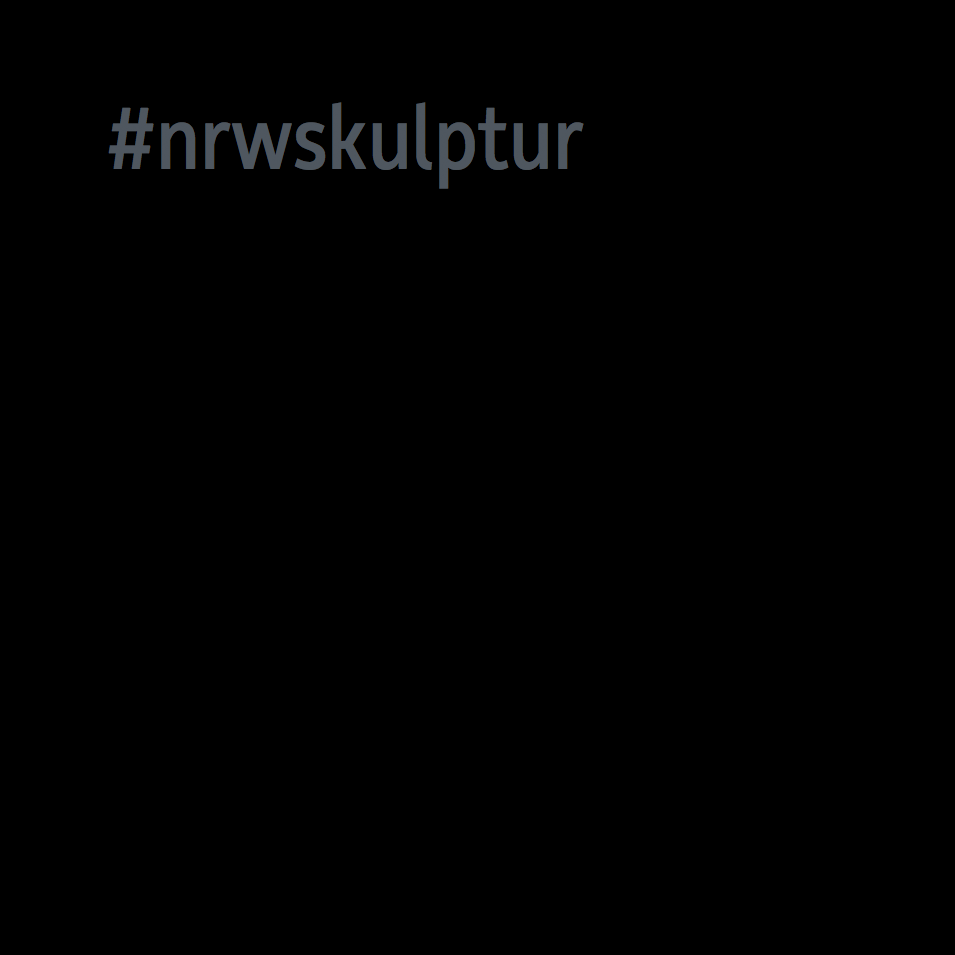Integration Stehlinsen / Integration of Standing Lenses
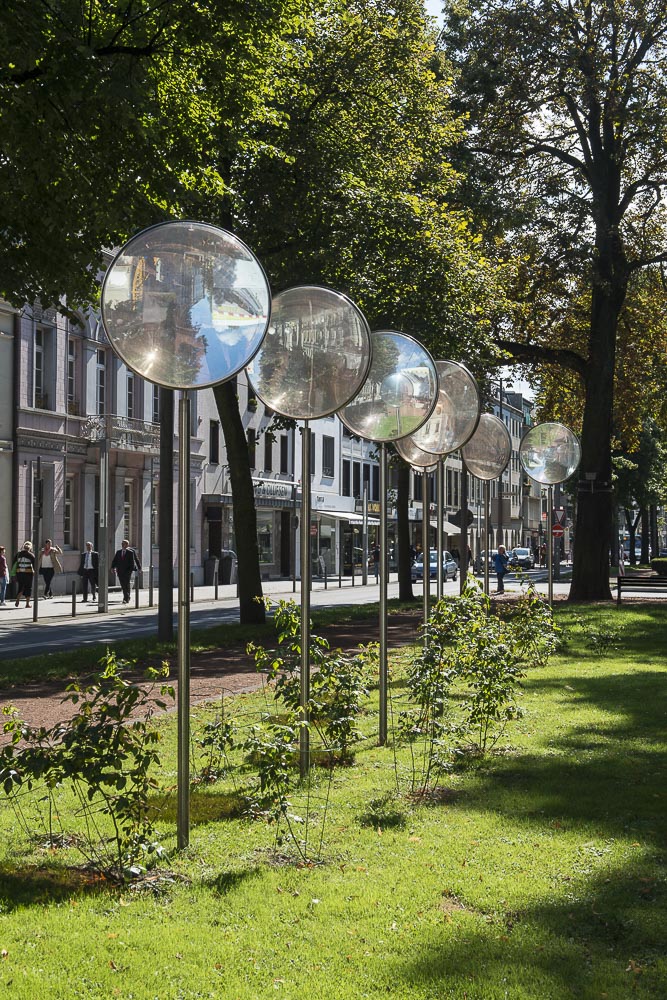

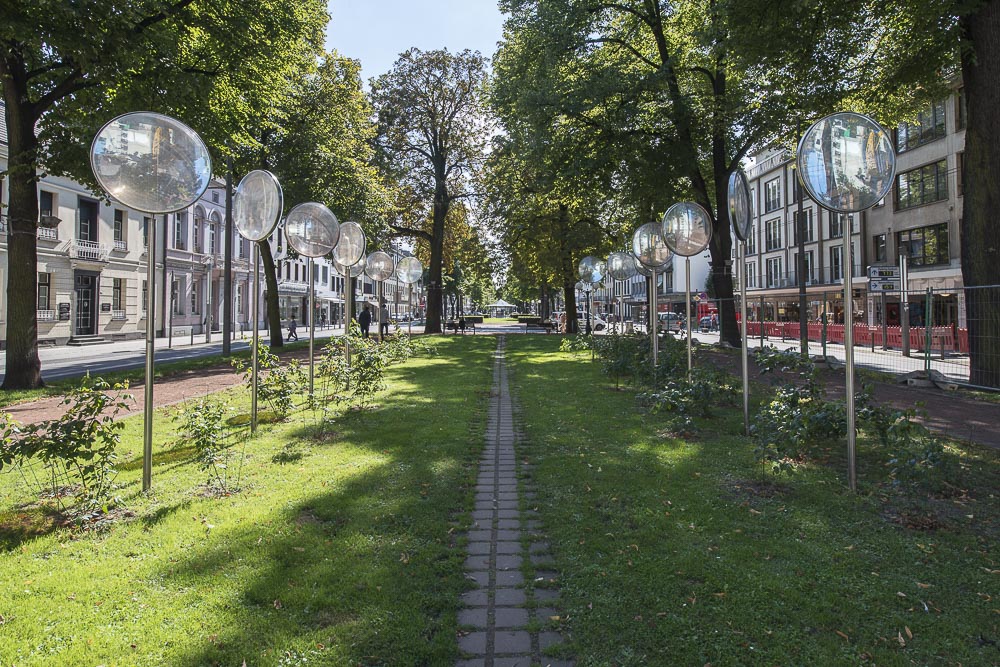
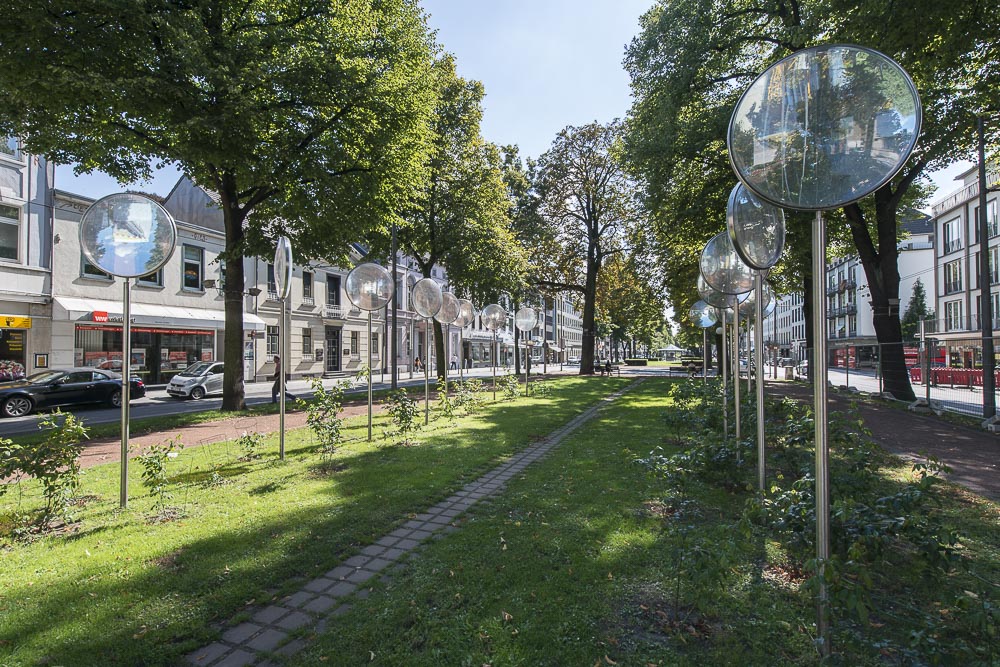
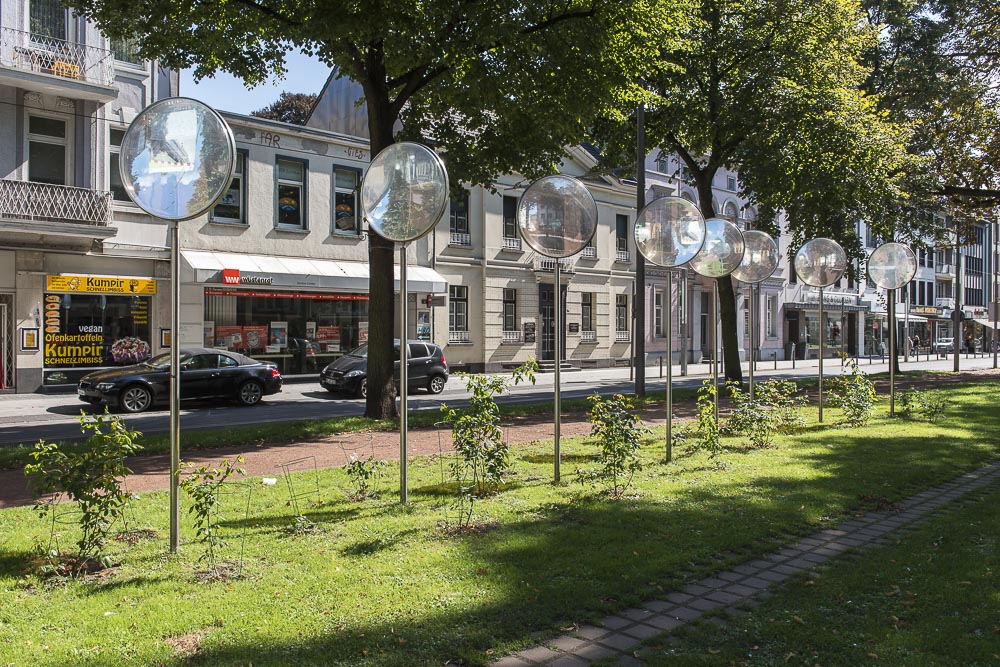
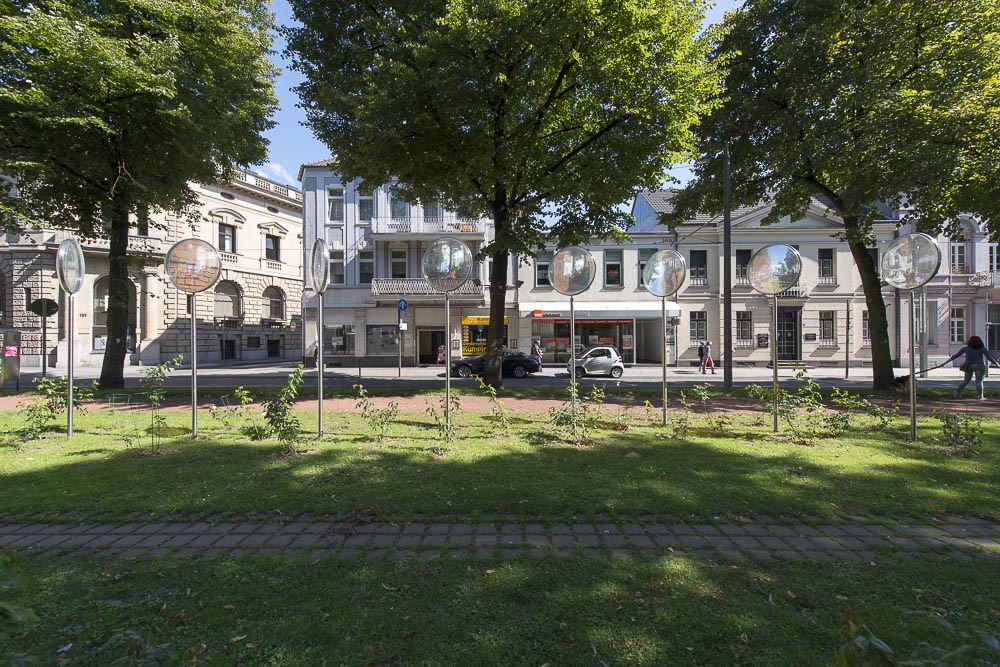
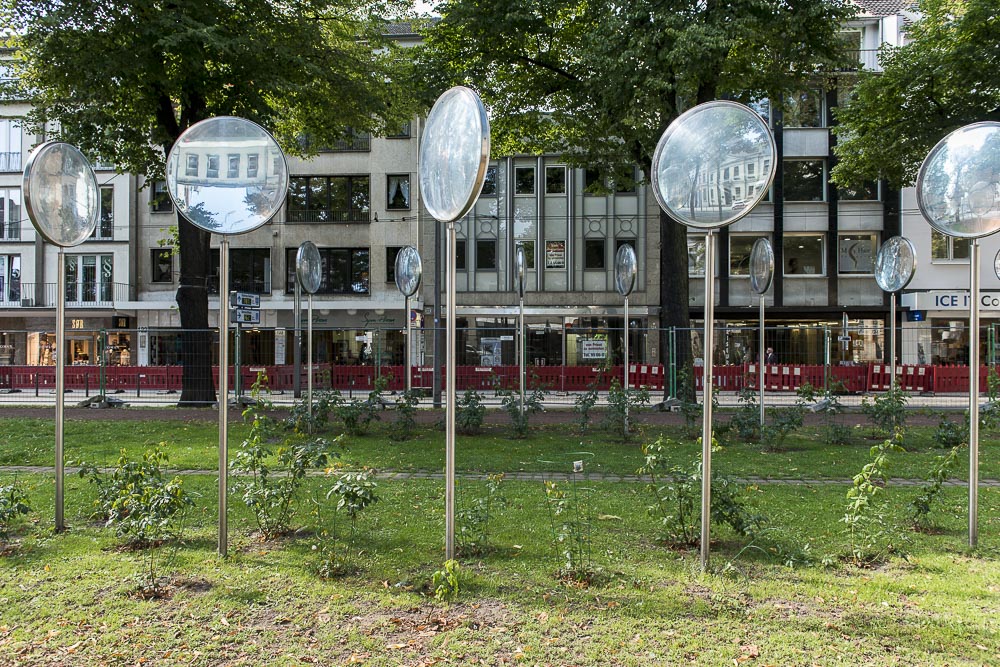
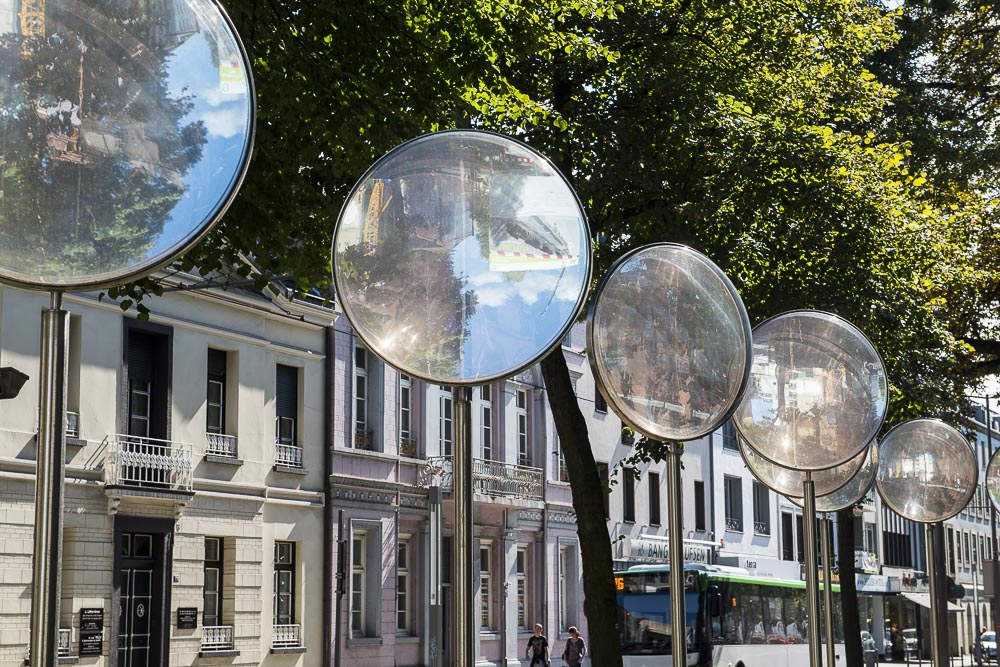
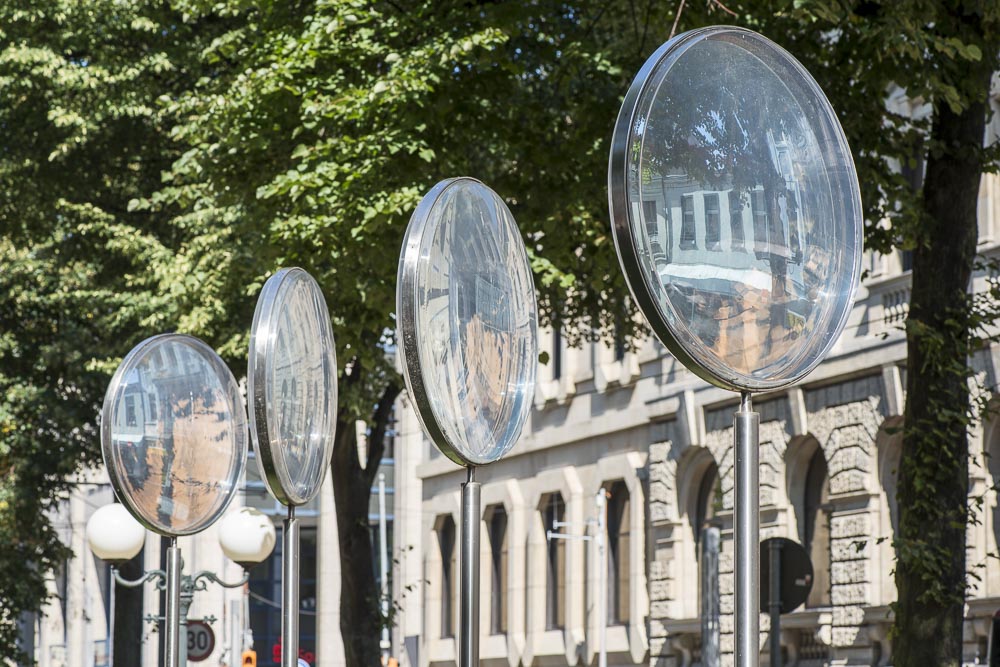
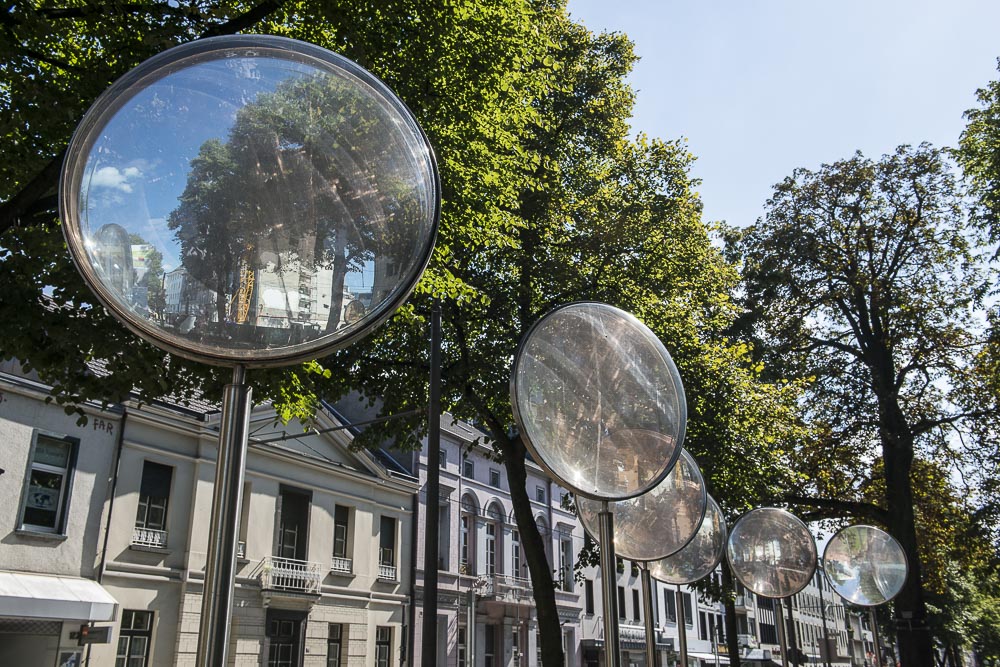
Adolf Luther, one of the most important German optical art and light artists of the 1960s and 70s, has been rediscovered in recent years. This is largely because of similarities between his work and more current approaches, such as the work of Olafur Eliasson. With his interest in scientific research on light and perception, Luther is considered a pioneer of these artistic methods. Accordingly, his kinetic sculpture Integration in his hometown of Krefeld has gained popularity as one of his larger works in public space. The work includes sixteen semitransparent concave circular mirrors mounted on stainless steel poles. They are arranged in two rows of eight along the Ostwall promenade. The lenses are rotatable, so that they can be moved by the wind. In this way, they display highly varied images of their surroundings: along with buildings and trees, they even reflect themselves; images are made larger or smaller, shown upside down or right side up. Most significantly, the lenses continuously reflect the light, which always plays a major role in Luther’s installations.
Adolf Luther
← Zur Startseite
Ostwall, Höhe Haus Nr. 125, 47798, Krefeld
